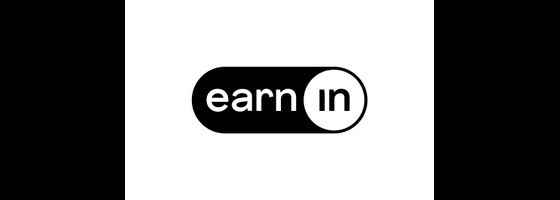8 Types of Personal Loans Explained

Our evaluations and opinions are not influenced by our advertising relationships, but we may earn a commission from our partners’ links. This content is created by TIME Stamped, under TIME’s direction and produced in accordance with TIME’s editorial guidelines and overseen by TIME’s editorial staff. Learn more about it.
Personal loans could be a wise option if you need to borrow to pay for a large expense or to cover a financial emergency. A personal loan lets you access a lump sum of cash that you can use to cover anything from medical bills to debt consolidation to home repairs.
However, not all personal loans are the same. Depending on your needs, you can choose from different types. If you're new to personal loans or shopping around for one, here's what you need to know.
 |  |  | |
|---|---|---|---|
| Advance limit | $500 | $750 | $250 to $250 |
| Monthly fee | $1 per month | $0 | $9.99 to $19.99 per month |
| Express delivery fees | Flat fee between $3 and $25 | $3.99 or $2.99 | No other fees |
| View Offer | View Offer |
Personal loans can be categorized differently depending on their purpose and structure. Here are nine basic types of personal loans.
An unsecured personal loan is approved based on the strength of the borrower’s application and doesn't require collateral, which is something of value that you use to get the loan.
Upgrade, for example, offers unsecured personal loans of up to $50,000. There are no hidden fees, and once you're approved, you can get funds the next day. You can also check your rates online without affecting your credit scores.
A secured personal loan requires the borrower to provide collateral upfront to get approved. Collateral can be cash, investments, a home, or a vehicle. If the borrower defaults on the loan, the lender can claim the collateral to offset any potential losses, reducing the lender's risk. A secured personal loan may be required if someone has bad credit or no credit at all. Sometimes, a borrower with strong credit may take out a secured loan to obtain a more favorable interest rate. For example, most new car loans have competitive annual percentage rates (APRs) partly because the loans are secured by the purchased vehicle.
Debt consolidation loans allow borrowers to combine multiple credit products, often at high interest rates, into a single loan payment. You might take out a consolidation loan to pay off high-interest credit card debt, medical bills, or other debts.
With Upstart, for example, you can borrow up to $50,000 to consolidate debts or refinance a car loan. There are no hidden fees, and it's possible to get funded as soon as the next day. Keep in mind that consolidating or refinancing debts only save you money if your new interest rate is lower than your old one.
When comparing personal loans, it's always wise to check the interest rates. And it's important to know whether that rate is fixed or variable.
Fixed-rate personal loans apply the same interest rate over the life of the loan. This is a good thing if you're looking for predictability. With a fixed-rate loan your monthly payments won't change, and you'll be able to calculate exactly how much interest you'll pay.
Adjustable or variable-rate personal loans don't have a set interest rate; instead, the rate is tied to an underlying benchmark rate.
If the benchmark rate increases, your loan rate will increase. If the benchmark rate decreases, your loan rate will decrease. An adjustable-rate personal loan could save you money if your rate remains low for the life of the loan, but it may cost you more in a rising rate environment.
A cosigned loan has two borrowers. While one person might agree to make the payments, both signers are legally responsible for the debt. Joint loans are also taken out by two people, both of whom are considered to be responsible for the debt.
Whether you get a joint loan or a cosigned loan depends on your financial situation. If you cannot qualify for a loan in your own name, you might ask someone to cosign a loan for you. Having a cosigner could make it easier to get approved.
If you're married or partnered, then you might take out a joint loan in both your names. In the case of a joint loan or cosigned loan, both borrowers' credit scores and income are considered for approval.
Not all lenders offer joint or cosigned loans. Lightstream allows you to apply with a co-applicant. You can borrow up to $100,000, with repayment terms lasting from 24 to 144 months, depending on the loan type. You and your joint borrower will need to have credit scores rated “good” to “excellent” to qualify.
A personal line of credit is a little different from a loan. Instead of borrowing a lump sum of money, you get access to a revolving credit line.
You can borrow against your credit line as needed and only pay interest on the amount of your credit limit that you use. If you need money to cover expenses but aren't sure of the amount, you might prefer a line of credit to a personal loan.
Buy now, pay later (BNPL) is a convenient way to pay for purchases online. Typically, you make one up-front payment toward your purchase, with the remaining balance spread out in installments over three to five weeks.
BNPL technically isn't a loan, as you're not getting any cash in hand. Instead, you can buy the things you need or want, and then pay for them over time. It's sort of like layaway, only you get the items when you buy them instead of waiting until the purchase is paid in full.
The best type of personal loan depends on how you plan to use the money, how much you need to borrow, and how good (or bad) your credit is.
When comparing personal loan options, it's important to do the proper research.
Specifically, that means looking at:
Checking your credit scores can give you a better idea of the personal loans you're most likely to qualify. If you have a 670 score or higher, for example, then you most likely wouldn't need to consider a secured loan.
You can also shop around to compare rates from different lenders. Just be sure to consider whether checking rates will affect your credit scores.
If you’re interested in a personal loan, your current bank or credit union might be the first place to look. Your bank may be willing to offer a relationship rate discount or other incentives if you've always been a loyal customer.
Once you've considered your bank's loan options, you can take your search online. You can visit individual lenders websites or simplify your search by checking a loan marketplace.
LendingClub, for example, allows you to check your rates online with partner lenders. You can view loan options and decide which ones, if any, for which you'd like to apply. Getting a loan through LendingClub might make sense if you're interested in borrowing up to $40,000 for debt consolidation, home improvements, or major expenses.
A personal loan isn't the only option you have when you need to borrow. Here are some borrowing alternatives to consider:
Of course, you could also try less conventional options when you need money. For instance, you might sell things you don't need to raise cash or ask friends and family for a small, interest-free loan.
Personal loans can help you pay for planned expenses or cover the occasional financial curveball. Knowing how different types of personal loans compare can make it easier to find the right one when you're ready to borrow.
Banks, credit unions, and online lenders can all offer personal loans. Whether it makes sense to choose one type of lender over another can depend on your personal preferences. Getting a personal loan online, for instance, might be easier and more convenient than going to a traditional bank or credit union.
The best financing option for a personal loan is ultimately the one that will approve you for the most favorable loan terms. This might be a bank, a credit union, or an online lender. It's important to understand how your credit score affects your loan options and what kind of loan is best in order to find the right lender.
Cash advance or payday loans advance money to you with the expectation that you'll repay it in a relatively short time frame. For example, you might get a no-credit-check loan or payday cash advance loan against your next paycheck. On the other hand, personal loans let you borrow a lump sum, which you would generally pay off over months or years.
The information presented here is created by TIME Stamped and overseen by TIME editorial staff. To learn more, see our About Us page.



